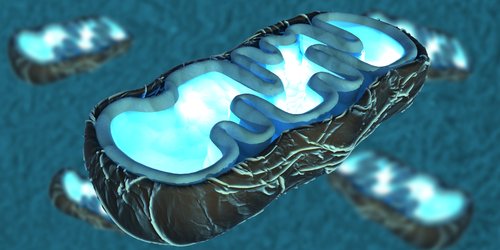Phase 1/2 Trial of Mitochondrial Cell Therapy for Pearson Syndrome Starts Dosing

A Phase 1/2 trial of a potential Pearson syndrome treatment called Mitochondrial Augmentation Therapy (MAT) has dosed its first pediatric patient.
This study of Minovia Therapeutics’s MAT is the first ever of a mitochondrial disease cell therapy. The patient was dosed at the Sheba Medical Center Hospital in Tel Aviv, Israel. Enrollment is ongoing by invitation.
“This trial of MAT in Pearson syndrome is an important step toward addressing mutations and deletions of mitochondrial DNA, because there are many other mitochondrial diseases with no available therapies,” Natalie Yivgi Ohana, PhD, Minovia’s co-founder and CEO, said in a press release.
“If it is successful, it will not only provide improved quality of life for those living with Pearson syndrome; it could pave the way for the development of treatments for all mitochondrial diseases,” Yivgi Ohana said.
Pearson syndrome is caused by a mutation in mitochondrial DNA, which may impair the cells’ ability to produce energy. This disorder primarily affects the bone marrow — reducing the levels of red blood cells, white blood cells, and platelets — and the pancreas, which can lead to frequent diarrhea and stomach pain, difficulty gaining weight, and diabetes. Children with this syndrome may develop Kearns-Sayre syndrome.
MAT in Pearson syndrome involves a six-step process. Mitochondria — the cells’ power plants — are extracted from white blood cells derived from the patient’s mother. In turn, stem cells are collected from the patient, who receives treatment with Neupogen (filgrastim, by Amgen) to boost the production of white blood cells in the bone marrow and with Mozobil (plerixafor, Sanofi-Aventis) to mobilize the hematopoietic stem cells containing the CD34 protein marker into the bloodstream.
The scientists then introduce the healthy mitochondria into patient-derived stem cells, which are given back to the patient via a one-time intravenous infusion to ultimately improve the cells’ energy levels. The U.S. Food and Drug Administration has granted fast-track, orphan drug and rare pediatric disease designations to the investigational treatment.
The open-label study (NCT03384420) will assess the safety and therapeutic effects of MAT. It will recruit seven children to analyze the number of participants with treatment-related adverse events at one year, as well as improvement in quality of life, as assessed by the International Pediatric Mitochondrial Disease Scale.
Other analyses at one year will include cognitive function, changes in brain magnetic resonance imaging, and alterations in physical activity, muscle function, weight, and blood levels of lactate — a mitochondrial disease marker.
Three children with Pearson syndrome have already received treatment with MAT at the same hospital under a compassionate use program, which was the basis of the ongoing clinical trial. Case studies of these patients and one with Kearns-Sayre syndrome were to be presented at this month’s Mitochondrial Medicine 2019 meeting of the United Mitochondrial Medicine Foundation, taking place in Arlington, Virginia.
“The clinical and lab improvement evidenced in the first three patients … encourages us to continue with the current clinical study and in the future hopefully to implement this technique in the treatment of other mitochondrial diseases,” said Amos Toren, MD, PhD and Elad Jacobi, MD, co-principal investigators of the study.
Besides starting the trial, Minovia is opening a U.S. operation in Cambridge, Massachusetts, and is looking to boost its collaborations across North America. The company appointed John Cox, the former CEO of Bioverativ, chairman of the board. According to Yivgi Ohana, his experience “will be invaluable to our mission to help those with mitochondrial diseases.”






